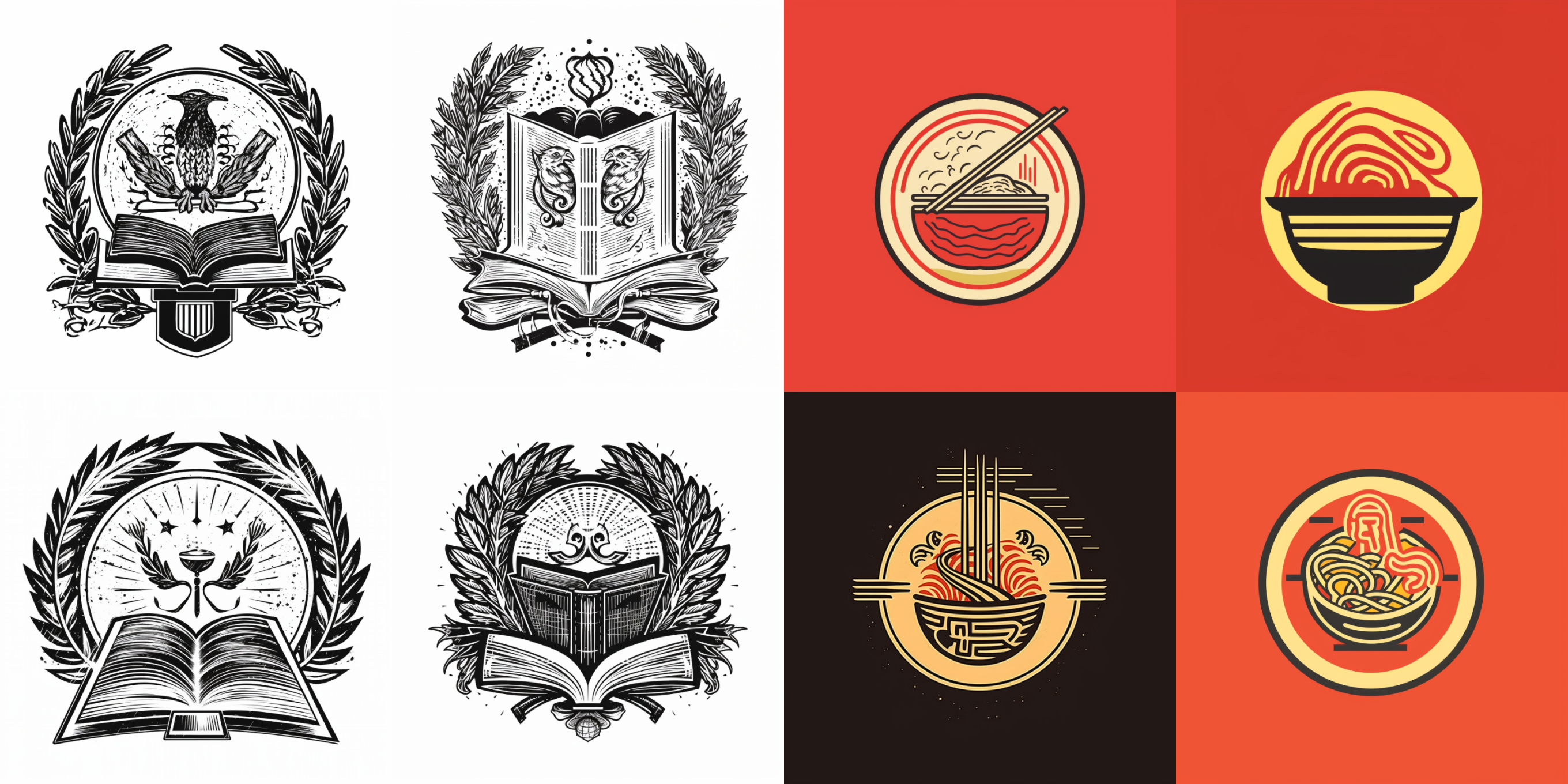Scene 3: App & Badge Logo
App logo
Actually, the App Logo can use the brand logo mentioned in the previous chapter, with a rectangular border added to it. It can be easily completed in a few steps using Figma 😂.
However, if you really don't want to use Figma, you can also use Midjourney to generate it.
Take a look at the apps on your phone and think about how to write an App Logo Prompt.
Using the example from the previous chapter, I wrote two prompts and got the following results:
The key points are:
Logo type: mobile app logo
Logo graphic description: For iOS logos, they are all rounded rectangles: squared with round edges.
Logo graphic description, such as an icon for an Instant Noodles company.
Style: You can continue using the method mentioned in the previous chapter. I added some pop art.
squared with round edges mobile app logo, an icon for a Instant Noodles company, pop art
I also found that by adding an icon for before the Logo graphic description, the generated Logo will be more in line with expectations, the right side is with an icon for and the left side is without:
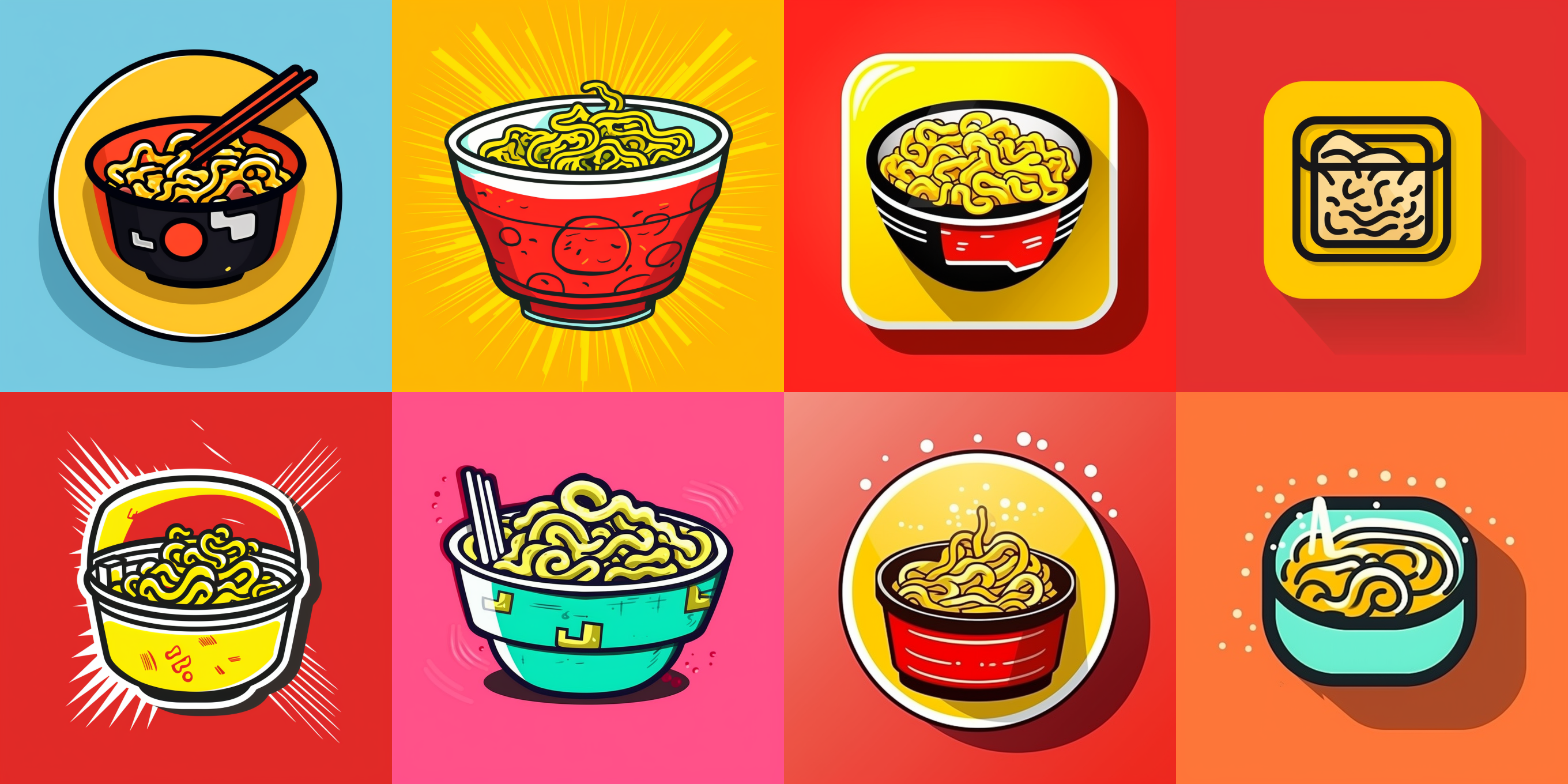
In addition, the logo pattern is Graphic, Lettermark and Geometric, which will be more in line with expectations:
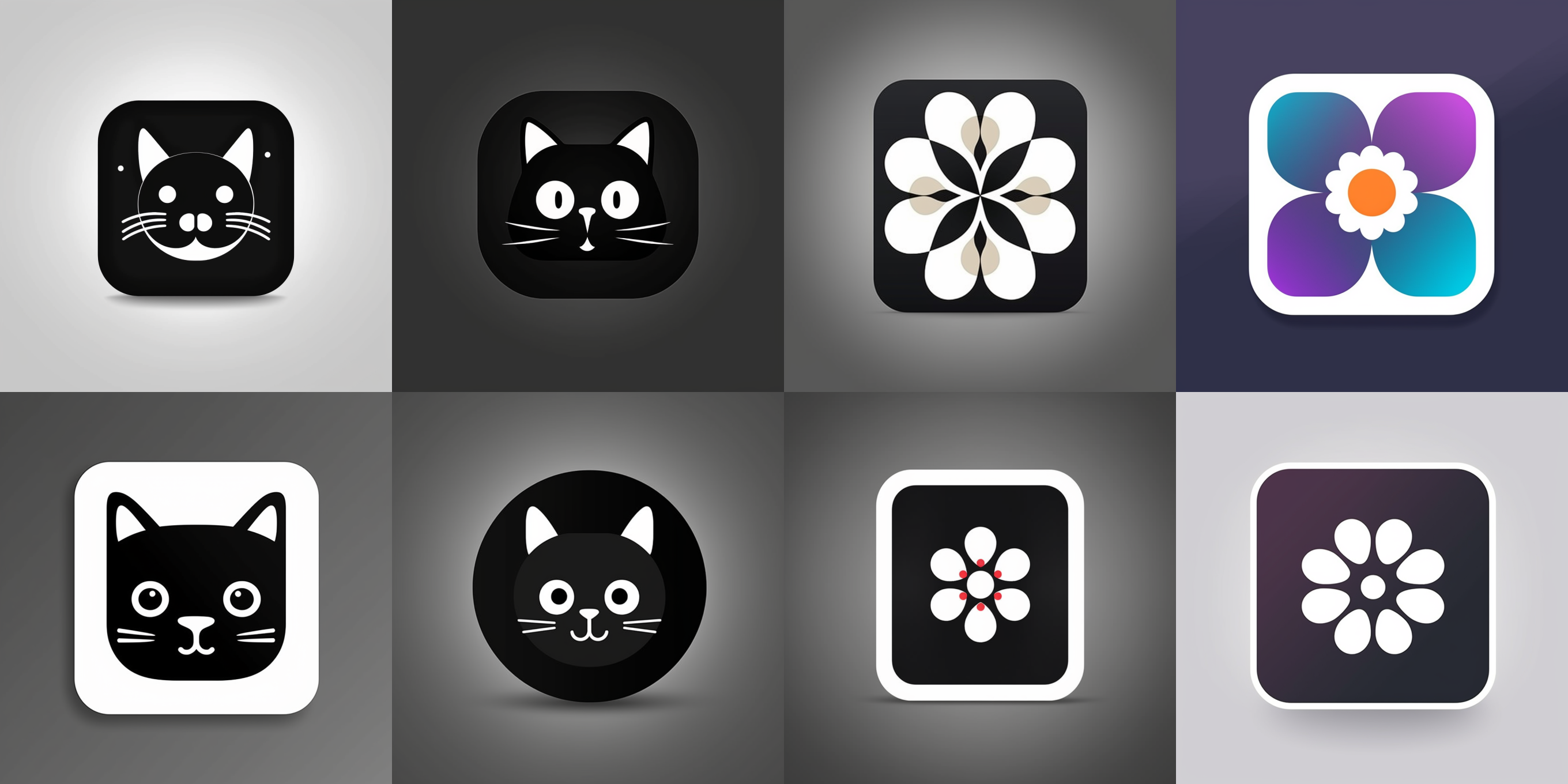
Tip5: Adding Style - Artist
The previous chapter introduced the method of adding art movements to make the generated images more unique.
In this chapter, we will teach you another method, which is to add the name of an artist.
First, it should be noted that Midjourney supports most art movements but relatively few artists.
Thanks to the unremitting efforts of netizens, as of March 31st, V4 has known support for over 2,000 artists and V5 has over 100. Among them, only Paul Rand and Saul Bass are listed as logo designers.
Paul designed logos for IBM, EF Education First and NeXT while Saul designed logos for United Airlines and AT&T.
The usage is very simple - just add "by Paul Rand" at the end of your prompt.
letter A logo, lettermark, typography, vector simple, by Paul Rand
Of course, it's not that you can only add logo designers, but it's also interesting to add the names of designers who haven't designed logos before.
For example, I added Piet Cornelies Mondrian to the four pictures on the right, and the third logo has the flavor of Composition II in Red, Blue, and Yellow.
The second one has a red frame with a black A, which has the flavor of his classic eyewear logo, and I really like it:
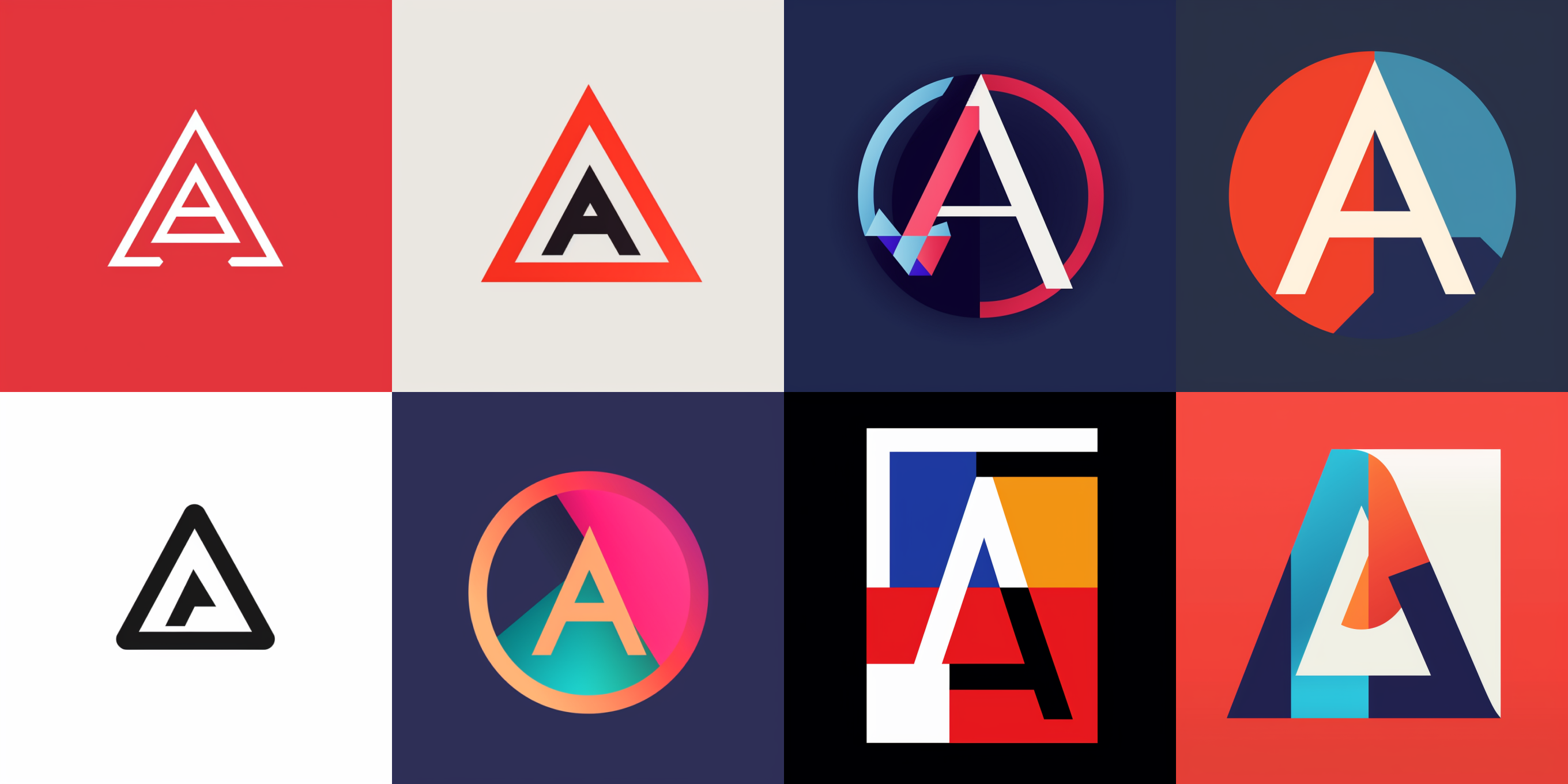
Finally, it should be noted that adding the name of an artist may result in the following situations:
Many generated images have a similar style: This is because some artists have very strong signature styles, such as Piet Mondrian whom I really like. If you use his name, you may find that many of the generated images are in the style of Composition II in Red, Blue and Yellow.
The generated image does not look like the style of the artist: In my own testing, I found two possibilities.
One is that the model did not learn from this particular artist's work (especially for newer artists who may not be included), and another possibility is that some words in your prompt conflict with this artist's style.
For example, if you use Leonardo da Vinci but describe a Japanese anime girl as your subject.
Logo
The school's emblem is a typical emblem logo, and it is very simple to use, just adjust the logo type to emblem, and the other style that matches the emblem is Vintage, after adding both the prompt looks like this
emblem for a Instant Noodles company, vintage, simple minimal
The four on the right are added vintage, is not very retro, I really like:
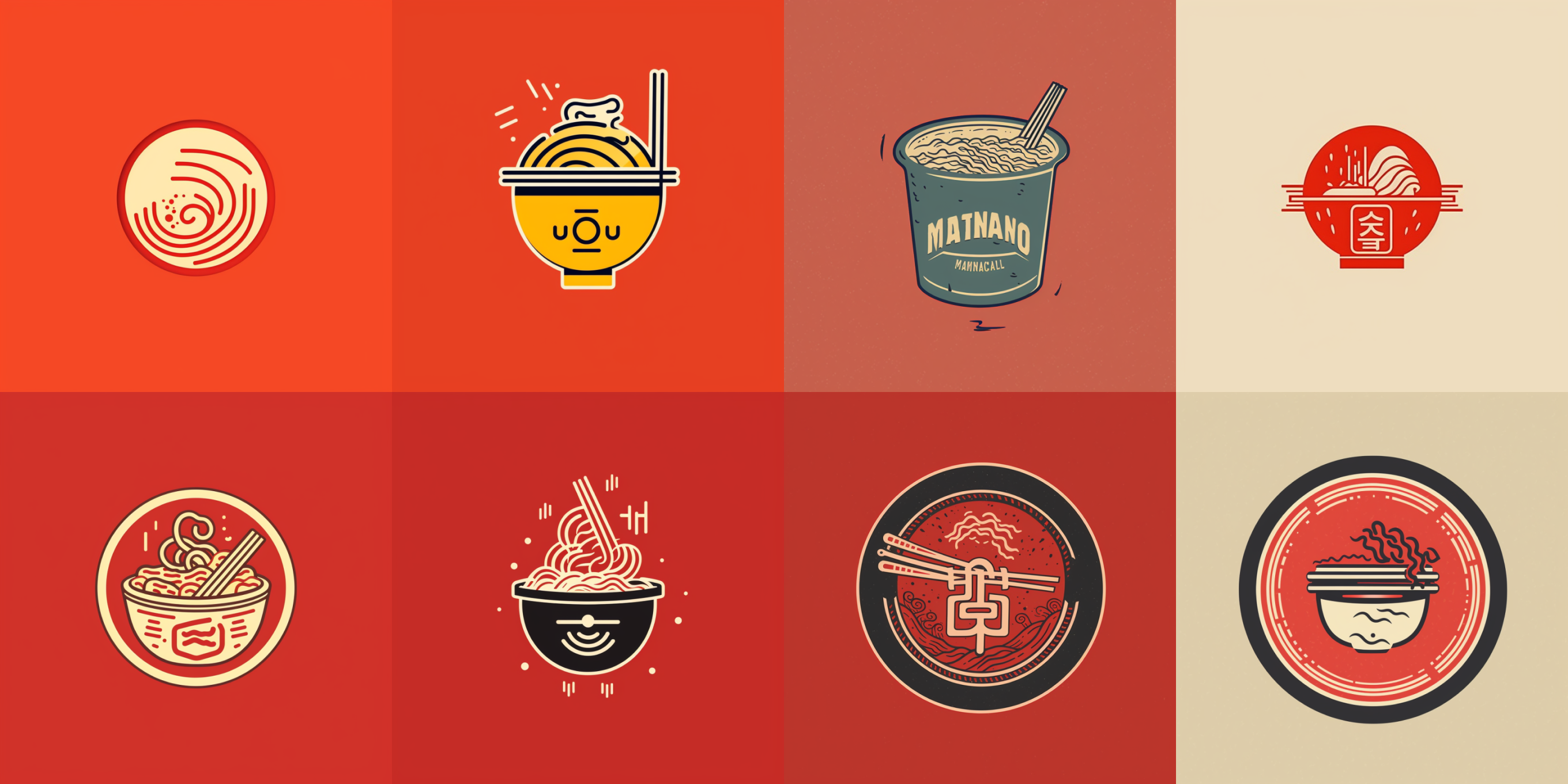
Tip 6: Make good use of the no parameter to remove unwanted elements
In the case of badge logos, you may have seen monochrome badges such as school emblems.
However, Midjourney has a habit of generating complex content and generating monochrome content.
You can add words such as color and background in the prompt to make it concise.
Another trick is to use the 'no' parameter. For example, if I want to create a monochrome school emblem with a book as the main body, but because Midjourney is not very good at text, I also need to remove the text.
Here is my prompt: I added 'no realistic color' and 'text' at the end.
emblem for a university with large book, vintage --no realistic color text
Then I added no text to the Instant Noodles company prompt above, and the final two sets of images generated look like this (finally, note that no text sometimes fails when the no parameter is used in the logo, but if you remove the - and enter no text directly, it will take effect, mysteriously, probably a bug):
